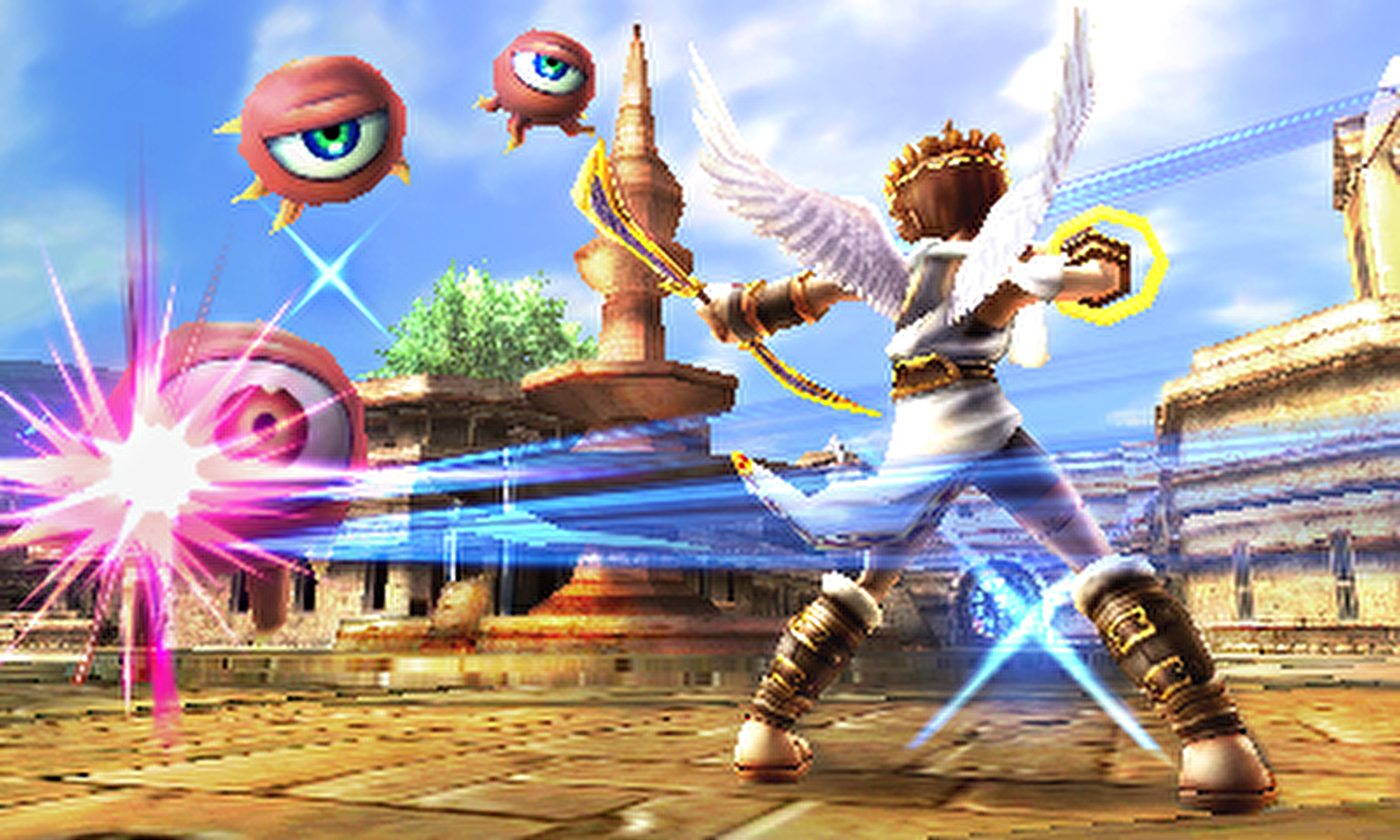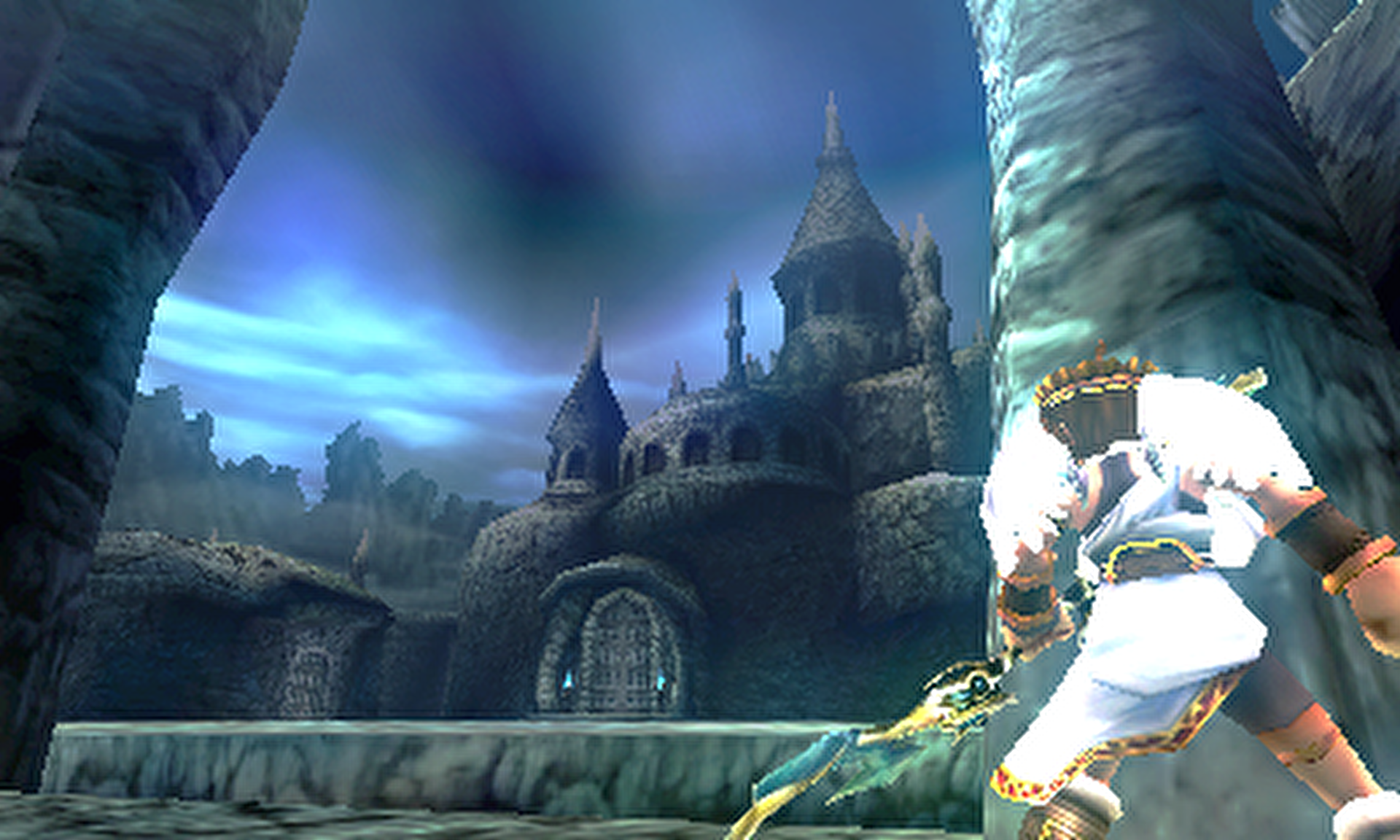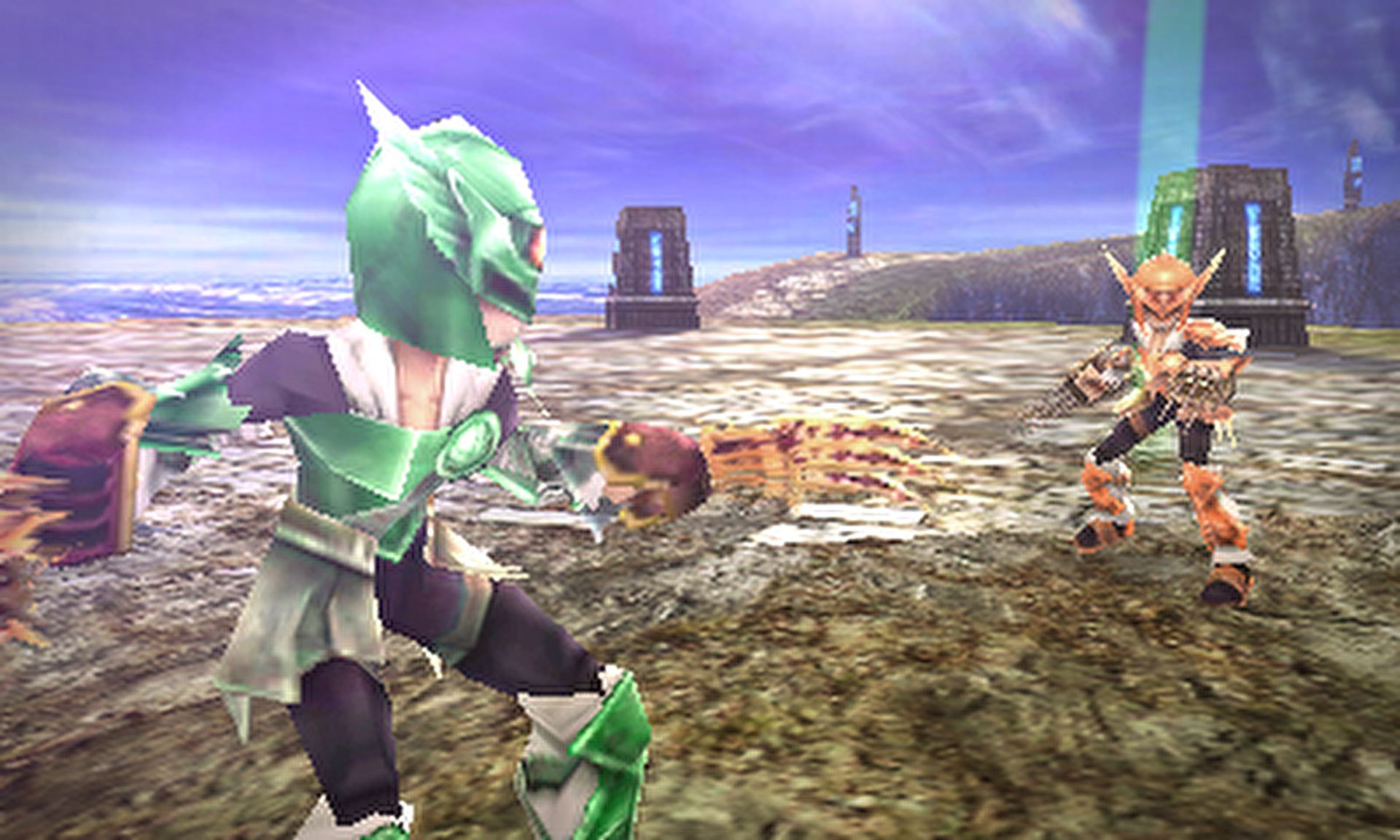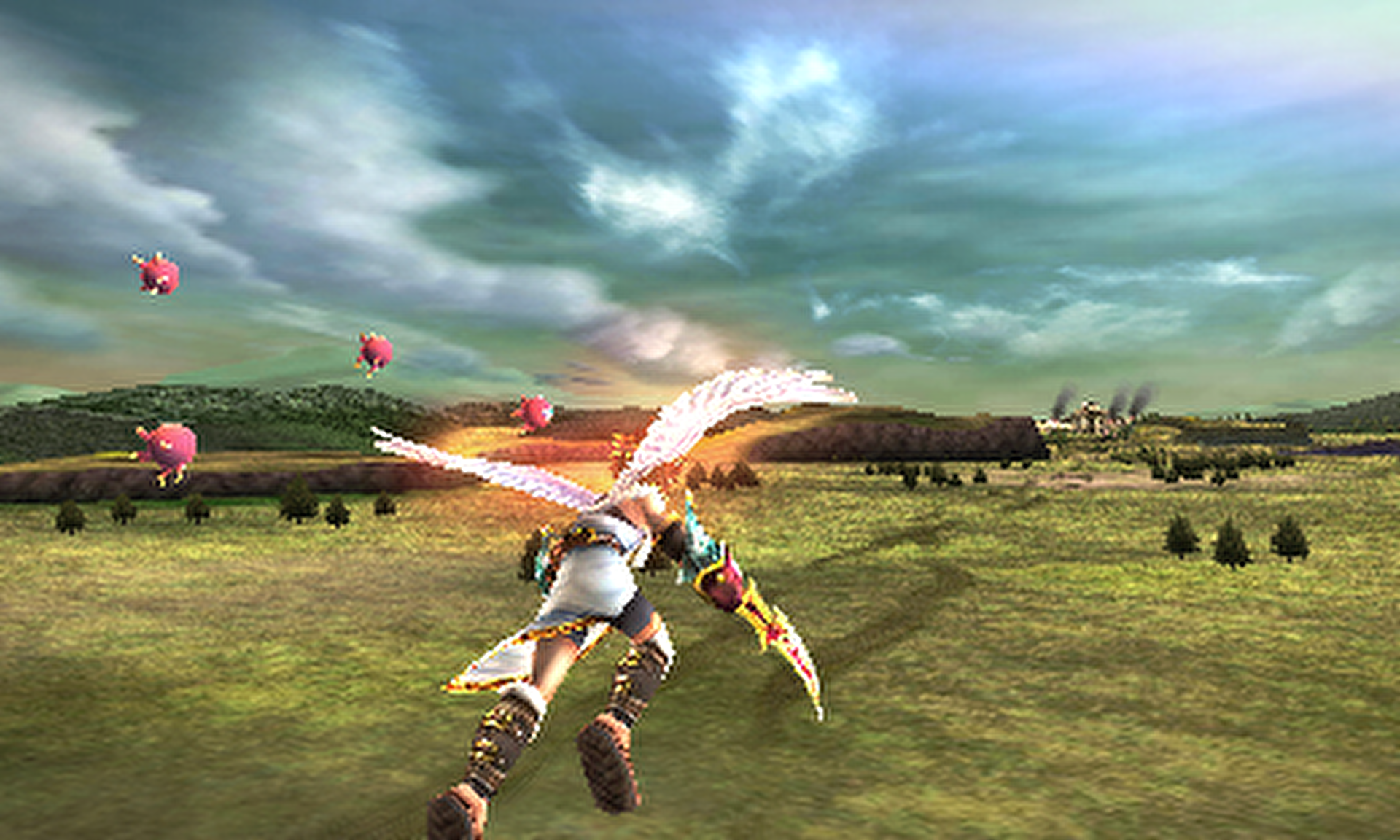Sakurai brings Pit back from the dead to give us the first really good Kid Icarus game in twenty fi—ever.
Kid Icarus: Uprising is the result of several years of hard work by Masahiro Sakurai's Project Sora team. As a natural progression of the 2D air and land battles of the original Kid Icarus, Uprising pulls a Super Mario 64 and brings the gameplay into 3D. After two years of concern over the controls and progression of a series that wasn't necessarily beloved to begin with, Masahiro Sakurai shows us that his genius bleeds through no matter the situation, even if the entire experience isn’t the most cohesive.
The gameplay in Kid Icarus is a little different from most games in its genre. Half of each level is spent in an excellent Star Fox-like rail shooter where you fight enemies and receive the setup for the story. The second part is spent in a third-person action section, where instead of moving the reticle and pressing L over and over, you move Pit using the Circle pad, attack with L, and handle both the camera and power-ups with the bottom screen. While many complain about the camera (and have a right to), I think the controls work well once you’re acclimated. With that said, that quality isn't an excuse for making an entire part of the game an inconvenience to play. Cameras should not have learning curves. Initially, the shooter sections are the better of the two, though land combat— where secrets, more enemies, and more unique situations occur—takes that position as the story develops. In addition, replaying levels for weapons and points is incredibly addictive,and likely took up the bulk of my time outside of completing the story itself.

The game contains a remarkably deep weapon system. The game’s dozens of weapons have their own stats, value, and bonus effects, even between two of the exact same weapon. There are 10 weapon classes to choose from (from the melee-focused clubs to the sniping-focused staff's). Each weapon within also has its own pros and cons. This creates an ideal scenario in which there is no super-secret best weapon, but rather a best weapon for one individual. Kid Icarus offers a weapon fusing system on top of this, allowing the combination of two weapons to form a new weapon that's almost always more powerful than either, but sometimes ends up being worse altogether. On top of this, there are vehicles in stages with unique weaponry. For example, a light tank focused on speed is typically included on racing-track stage sections. Another, a robotic fighting suit, is used to annihilate enemies with ease, despite being quite slow. The controls are somewhat less stable for these vehicles, but their inclusion is a fun way to breakup the combat.
Uprising includes bosses at the end of each chapter, and while some are quite fun, a many are equally generic, lazy, and sometimes barely existent. A fair few bosses aren't even real bosses, but rather enemy waves featuring a central "pod" to attack. Likewise, much of the great original level design is countered by an almost equivalent number of levels that drag on far too long or include unexciting mechanics. An example: one chapter is almost nothing more than enemy waves, with no exploration to speak of. Even though some parts of the game are on the shaky side, I see these them as easily forgivable, especially considering that this game is about four times longer than the average rail shooter..

If nothing else, Uprising’s story certainly has some distinctive characteristics . The narrative involves Pit and Palutena trying to take down Medusa. While the base idea starts simple and Nintendo-y enough, Project Sora inserts all the real plot into the dialog, and for the first time in years, a non-RPG Nintendo first-party game has a story that's genuinely clever and, for the most part, genuinely well-written. While the back and forth exchanges made me laugh now and again, though, what really astounded me was how much I cared about Pit as a character, felt intimidation by the antagonist, and got terribly into what was going on as the game progressed.
Kid Icarus features multiplayer (called Together Mode), allowing local and online play. The offering includes two six-player modes, Free-For-All (in which angels do land battle, gaining points by defeating one another), and Light vs. Dark. In the latter mode, teams do battle against each other, with a life bar representing their respective status. Once a team’s life bar runs out,the most recently defeated team member becomes an angel, and the defeat of a team’s angel signals the end of a game. Both multiplayer modes are an absolute blast, as there are plenty of rewards and incentives for playing (like weapons and powers), and the game is incredibly addictive, in a way I’d compare to Metroid Prime Hunters. And like that game, I wouldn't be against the idea of saying multiplayer in Kid Icarus is equally as fun as single-player (though not more so).
Kid Icarus is also visually incredible. The graphics look far better than anything else on the 3DS and could easily stand against something from the later part of the GameCube’s life. Alongside fantastic character models, the environments are the true graphical stars of the game. The Grecian towns, full-scale battles taking place on the ground below, and the entirety of nature comes to life, and the environments look pretty enough to make the on-rails sections feel like part of a planet more than part of a level. Musically, Kid Icarus is also fantastic. Featuring various composers from outside sources, the music provides a real soundtrack rather than part of a generic orchestral score. Most of these songs are quite memorable, and some songs are very Nintendo-like in how they twist a main theme into a completely different song.

In addition to multiplayer and the single-player campaign, Uprising includes many smaller modes as well. The heavily touted AR Card Battle, where players place the included augmented reality cards across from each other to do battle via the 3DS camera. It's simplistic and doesn't necessarily add much to the overall experience, but it was definitely fun for what it was. In addition to AR battling, players can also scan cards to form Idols in the game. One of my favorite features is Treasure Hunt, an achievement system that unlocks Idols, currency, weapons, music,and more for (almost) every achievement.
The game sports a feature called "Fiend's Cauldron" that allows the player to choose a difficulty (between 0.0 and 9.0) and bet a number of hearts (the game's currency) on the player’s level of success. Losing once provides a loss of some rewards, as well as a drop in the initially selectable difficulty. In addition to hearts, playing the game on significantly higher difficulties and staying alive results in significantly better weapons, power-ups, and rewards. Although a fantastic idea, Fiend's Cauldron is broken in execution. First off, betting in the Fiend's Cauldron does not actually feel like betting—it just feels like selecting a difficulty. This is fine, except when losing once (when not gunning for rewards) drops the difficulty, ultimately feeling like a forced Super Guide. In addition, it is terribly easy to manipulate the system into giving better rewards. If you are a player who is not very good and sets the game on 9.0, not all of the rewards are lost upon losing. On top of this, the player should win the level eventually after enough tries. With this reasoning, setting the difficulty to max and losing a bunch of times (and getting help from the many generous checkpoints) will still usually result in a 2.3 player being able to win on 5.6 difficulty, obtaining tons of rewards and weaponry not necessarily deserved. To combat this, maybe an option could have been added to allow static difficulty at the cost of no rewards (for good practice), and maybe a five-life system akin to Smash Bros. to make it so a player couldn't easily have mid-game level weaponry by Chapter 2.

By the time I had put Uprising down, I had clocked about 20 hours—12 or so for the story, and the rest in multiplayer, replaying stages, and general bonus stuff. When I was through, I couldn't help but be overjoyed that the 3DS finally has a game this original, this good, and this... first party. While there were some bumps and rough patches in the experience, Uprising contains more than enough positive elements to easily counter them. The game is monumental, and acts as a true showcase of what the 3DS is capable of. If a game like Kid Icarus: Uprising comes out this early in a system life cycle, I can only dream of what Nintendo (or their subsidiaries) will think of next.
